Resources
This carefully curated collection of resources will help you find packages and learning resources to help you on your R journey.
Modern Data Science with R
Modern Data Science with R is a comprehensive data science textbook that incorporates statistical and computational thinking to solve real-world problems with data. It covers topics such as data wrangling, data visualization, inferential statistics, and more. The book is currently in its 3rd edition and includes updates and changes to reflect the evolving R ecosystem. It also provides instructor resources, reviews, and errata on its website.
Go to Resource

Modern Data Visualization with R
Modern Data Visualization with R by Robert Kabacoff is a comprehensive guide for creating a wide array of visualizations using R, specifically with the ggplot2 package. The online version, slated for print by CRC Press and Amazon, covers data import, cleaning, and preparation followed by an in-depth exploration of various graph types such as univariate, bivariate, and multivariate graphs. It also delves into topics like mapping, time-dependent graphs, statistical models, and customization of plots. Interactive graphs and best practices in data visualization are discussed to enhance the reader's graphing skills.
Go to Resource

Modern Data Visualization with R
Modern Data Visualization with R is a comprehensive guide by Robert Kabacoff on data visualization techniques using the R programming language. This book, available in both online and print versions, emphasizes the use of ggplot2 for creating a variety of charts and plots. Covering topics from importing and cleaning data to customizing and saving graphs, the book includes worked examples and best practices to help readers create publication-ready graphics. The content also introduces interactive graphing tools and offers advice on graph aesthetics such as color choice and signal-to-noise ratio.
Go to Resource
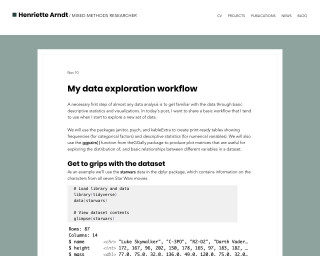
My data exploration workflow
A basic workflow for data exploration using R with packages janitor, psych, and kableExtra.
Go to Resource

My word template for Quarto | Andrew Wheeler
Andrew Wheeler's blog post discusses creating a custom Word template for use with Quarto, which is beneficial for reports that require formatting suitable for email, printing, or post-generation editing. Starting with the command to generate a default Word template from Quarto, Wheeler explains how to modify styles for various document elements like titles, headings, and code snippets. The template supports markdown tables and features styling for page numbers, headers, and footers. His template also includes personal branding with a hyperlinked logo. The post is a resource for those who prefer Word over HTML or LaTeX for their Quarto-generated documents.
Go to Resource
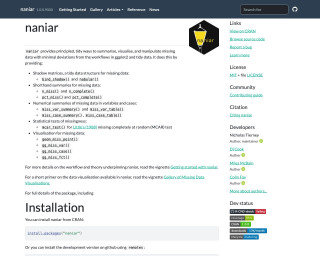
naniar
naniar provides principled, tidy ways to summarise, visualise, and manipulate missing data with minimal deviations from the workflows in ggplot2 and tidy data.
Go to Resource
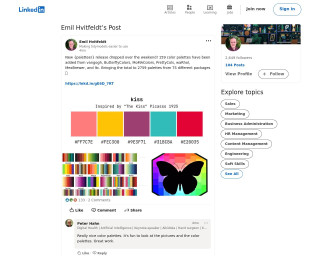
New {paletteer} release dropped over the weekend! 159 color palettes have been added
The content discusses Emil Hvitfeldt's LinkedIn post about a new release of the {paletteer} R package, which added 159 color palettes, bringing the total to 2759 palettes from 75 packages. It highlights the usefulness and aesthetic appeal of the palettes as articulated by community members, demonstrating the package's positive reception and usage within data visualization in R.
Go to Resource
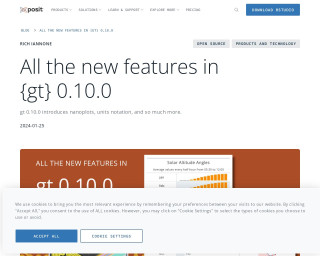
New features in {gt} package
The blog post highlights the new features introduced in {gt} 0.10.0, a package for creating tables in R. Developed by Posit, formerly RStudio, the update includes novel functionalities like nanoplots and units notation. Rich Iannone, a software engineer at Posit, outlines these enhancements. He's known for his work on R packages like {gt} and {blastula} and his contributions to the Quarto project. His talk of exploration and adventure reflects his passion beyond coding. The article encourages subscribing for more insightful open-source data science content.
Go to Resource

Notes from a data witch - Four ways to write assertion checks in R
Learn about four different approaches to writing assertion checks in R to ensure code fails loudly and throws an error when assumptions are violated.
Go to Resource
Notes from a data witch - Four ways to write assertion checks in R
This article discusses the importance of writing assertion checks in R to ensure code fails loudly and throws an error when assumptions are violated. It explores four different approaches to writing assertions in R, with examples and explanations.
Go to Resource
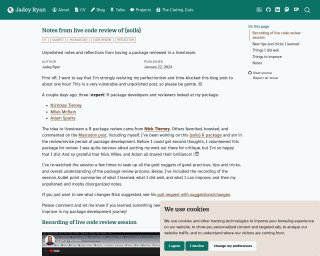
Notes from live code review of {soils} package
Jadey Ryan reflects on the value of having their R package, {soils}, reviewed live by expert R developers. The post includes candid thoughts on the process, emphasizes the importance of community feedback, and shares learning points such as good practices in R package development, defensive programming, and the use of specific R functions. It includes a recording of the review, insights on doing well and areas for improvement, and a mix of technical details relevant to R package development.
Go to Resource